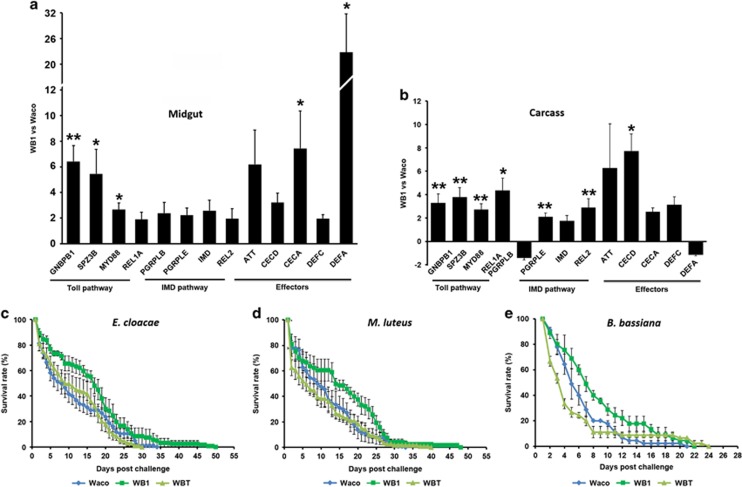Figure 1.
wAlbB induces both the IMD and Toll pathways in the A. aegypti line WB1. The fold change in the expression of Toll and IMD pathway genes, measured by qRT-PCR, in the midgut (a) and remaining carcass (b) of wAlbB-infected WB1 mosquitoes relative to the uninfected Waco line at 7 days old, prior to blood feeding. Each treatment had four biological replicates, with ten midguts or carcasses pooled as one sample. 2−ΔΔCT method was used to calculate the fold change for each gene. Significance was determined based on comparison of the ΔCT of each gene in WB1 and Waco using Student’s t-tests. *P<0.05; **P<0.01. Survival curves of the mosquitoes post-challenge with E. cloacae (c), M. luteus (d) or B. bassiana (e). WB1 is an A. aegypti line carrying a stable wAlbB infection. WBT is an aposymbiotic line generated by removing wAlbB from WB1 by tetracycline treatment, and Waco is a wild-type Wolbachia-uninfected line. Each treatment had either six (c and d) or three (e) biological replicates of 15–20 mosquitoes each. Error bars indicate the standard error. Survival curves are significantly different between WB1 and other groups (compared using log-rank test).

